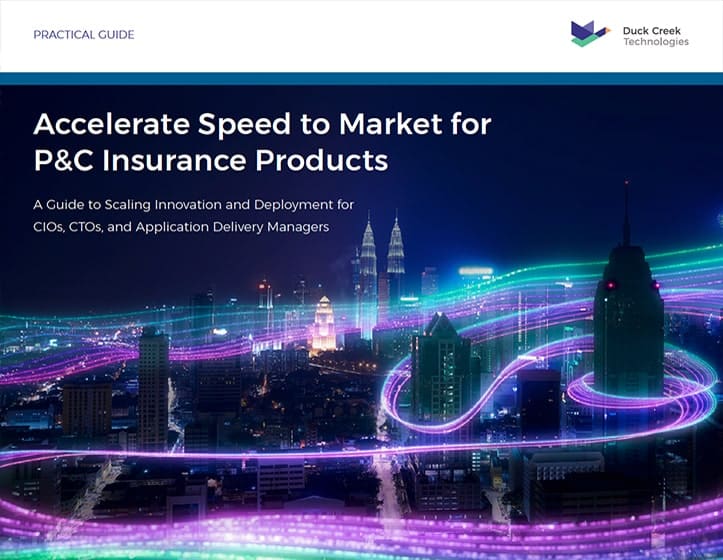Earlier this year at our Formation ’23 conference, we introduced the concept of humanized insurance experiences, whereby insurers prioritize the customer experience and carrier-customer relationship by striving to build trust and loyalty throughout the customer lifetime.
Humanized experiences happen across every touchpoint of the insured’s journey through the insurance lifecycle. For example, take The Hartford creating an intuitive website that makes it fast and easy for AARP members to get a quote and buy auto and home insurance. Humanized experiences though aren’t just about the pre-bind activities – it of course can and absolutely should occur during the moment of truth in delivering on the promise of insurance, such as Lemonade utilizing AI to process a claim in a record-breaking time of 2 seconds. Each insurer will have their own unique approach to creating humanized experiences depending on their business objectives.
To achieve humanized experiences though, I would argue that having the right technology stack in place is critical. So in this post, let’s take a look at how continuous updates in SaaS core systems will make it easier to enable insurers to define the humanized experiences of the future, more so than periodic upgrades.
Upgrades are a Blocker to Innovation
The industry has long known about the pain of core system upgrades. Back in 2020 when Duck Creek surveyed global insurers, we found that over 53% of respondents were upgrading their IT systems only once every 2-3 years. At the same time, core systems have continued to evolve from legacy mainframes and hosted on-prem, to “evergreen” SaaS; evergreen, meaning the systems are comprised of always up-to-date and flexible solutions that can adapt to your business ever-changing requirements.
The initial SaaS core systems have provided a marked improvement over the prior generation of those on-prem systems. With the vendor providing the upgrades, we’ve seen insurers improve their operational efficiency as upgrade projects have gotten faster over time. While these initial SaaS core systems have delivered new features, insurers have had to wait a long time for them, and this approach has not always been optimal for enabling insurers to design humanized experiences.
The good news though is that SaaS core systems continue to evolve, and they are becoming even more evergreen than before! How is that?
The paradigm is shifting from faster upgrades to no more upgrades, whereby insurers benefit from continuous updates, which include new features, as well as resolved issues and security patches. As an example, and a quick side note, at Duck Creek, we refer to our approach of delivering software as “Active Delivery;” with Duck Creek Claims, we’ve delivered over 250+ new features on a bi-weekly basis (over 80 software builds) in the past two years, while ensuring flexible adoption for insurers by way of feature flags.
The Value Behind Continuous Updates for Core Insurance Systems
In addition to being able to exchange timely and costly upgrade projects that put other priorities on pause in exchange for taking automated updates, a major benefit is that insurers receive enhancements more frequently. While in the past, insurers may have been tempted to customize their core systems on their own rather than wait for the vendor to deliver new capabilities, in a continuous updates cycle, product roadmaps are much more fluid and capabilities can be implemented much sooner.
One way to think about the value of the software is via a formula that I must give a hat tip to my colleague, Luis Amadeo:
Value = (Quality * Speed of Delivery) / Work
Value is the delivery of a Quality product or feature, multiplied by the Speed of delivery, divided by the amount of Work or effort it takes to deliver it.
Upgrades provide something closer to static value, delivered once, while continuous updates are dynamic; dynamic meaning value is delivered continuously over time, resulting in insurance carriers getting more quality features faster, with less work effort, ensuring that they can use new features and have a more resilient, scalable, performant, and secure system with less cumulative work and effort.
Bringing Technology Back to Humanized Experiences
To sum it all up, by increasing the speed of delivery and reducing the work, continuous updates will provide insurers with more value and enable them to innovate faster when reimagining humanized experiences. Whether it’s creating safer roads or getting the injured worker back to the office faster, having technology that is constantly evolving and improving frees up insurers to focus on configuring only as needed, rather than trying to customize systems because they lack capabilities.
What role do you feel that core systems should play in enabling humanized experiences? Drop me a note at rob.savitsky@duckcreek.com if you’d like to start a dialogue or workshop any ideas you may have.
